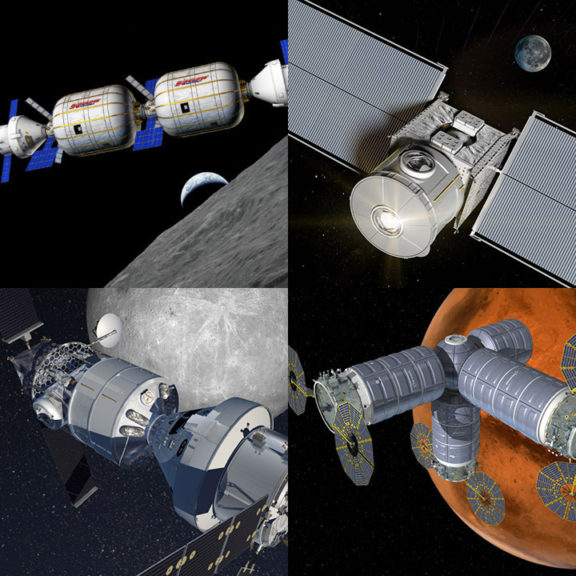Jason Davis • Jan 08, 2016
New Budget Bolsters NASA's Journey to Mars Plans
On December 18, 2015, President Obama signed an omnibus spending bill that funded the federal government through the rest of fiscal year 2016, which ends on September 30. The bill, which passed the House and Senate with comfortable margins, included $19.3 billion dollars for NASA—an increase of $1.3 billion from last year. Many NASA programs got the funding they requested or received even more. Back in October, when Casey Dreier first mentioned this possible outcome, he called it the "everybody wins" scenario.
For some programs, the bill included specific provisions on how funds must be spent. That's the case for NASA's human exploration program, a $4 billion budgetary line item that includes Orion, the Space Launch System, ground systems, and research and development. SLS received $2 billion—$640 million more than requested—with $85 million earmarked specifically for development on the rocket's new upper stage.
The first SLS flight will send Orion on an uncrewed trip to lunar orbit in 2018. For that mission, the rocket will fly with an off-the-shelf upper stage called the Interim Cryogenic Propulsion Stage, or ICPS. The ICPS is a modified United Launch Alliance Delta IV upper stage. It's not rated to carry humans.
The second flight, Exploration Mission 2, is also headed to lunar orbit—but with humans. That means NASA needs to either human-rate the ICPS at an additional cost, or have a new upper stage ready to fly by EM-2 (currently scheduled sometime between 2021 and 2023). The latter is the preferred choice, since long-term SLS plans call for a more powerful upper stage anyway. The new stage will be called the Exploration Upper Stage, or EUS.
Specific designs have yet to materialize, but NASA officials have been quoted saying the EUS would likely be Boeing-built and use four RL-10 engines—the same engines used to power ULA's Atlas and Delta upper stages and the ICPS.
In order to have the EUS ready in time for EM-2, NASA said it needed more money. The omnibus delivered:
"Within amounts provided for SLS, the agreement provides no less than $85,000,000 for development of an enhanced upper stage that is intended to be the human-rated upper stage engine for Exploration Mission (EM) -2. NASA shall not expend funds human rating the interim cryogenic propulsion stage."
This move should help keep SLS development on track. That's good news for the Europa mission, which may use SLS as a launch vehicle. The EUS provides shorter travel times to the outer planets, and both NASA and Boeing have promoted its use for planetary exploration. The spending bill sets a Europa mission launch date of 2022, which is aggressive for both the spacecraft and the stage itself.
In the 2020s, after EM-2, NASA plans to start making longer trips to lunar orbit—the interim destination and so-called "proving ground" before Mars. Here, astronauts will learn to live and work where it takes days, not hours, to make an emergency return to Earth.
The spending bill allocates $55 million to deep space habitat development:
"...no less than $55,000,000 is provided for a habitation augmentation module to maximize the potential of the SLS/Orion architecture in deep space. NASA shall develop a prototype deep space habitation module within the advanced exploration systems program no later than 2018 and provide a report within 180 days after enactment, and annually thereafter, regarding the status and obligation of funding for the program. The first such report shall include an analysis to determine the appropriate management structure for this program."
That's a relatively small amount of money, but it can be interpreted as a congressional endorsement of NASA's current humans to Mars strategy. It might also be the most NASA has spent on habitation module work since the introduction of SLS. By comparison, NASA spent $17.8 million on BEAM, the Bigelow Expandable Activity Module, an inflatable habitat testbed that will launch to the ISS as soon as February. And last year, four companies were awarded up to $1 million each under the NextSTEP program to develop small-scale habitat concepts capable of supporting Orion and a crew of four for 60 days in cis-lunar space.
It will be interesting to see what NASA does with the habitat funding. The four NextSTEP awardees were Bigelow, Boeing, Lockheed Martin and Orbital ATK. Bigelow's concept is based on its inflatable habitat technology. Boeing's emphasis is on evolvability, with the company drawing on its heritage in constructing the International Space Station. Lockheed's module builds upon Orion technology, while Orbital ATK proposes a design based on its Cygnus ISS resupply spacecraft.

The Time is Now.
As a Planetary Defender, you’re part of our mission to decrease the risk of Earth being hit by an asteroid or comet.
Donate Today

 Explore Worlds
Explore Worlds Find Life
Find Life Defend Earth
Defend Earth


